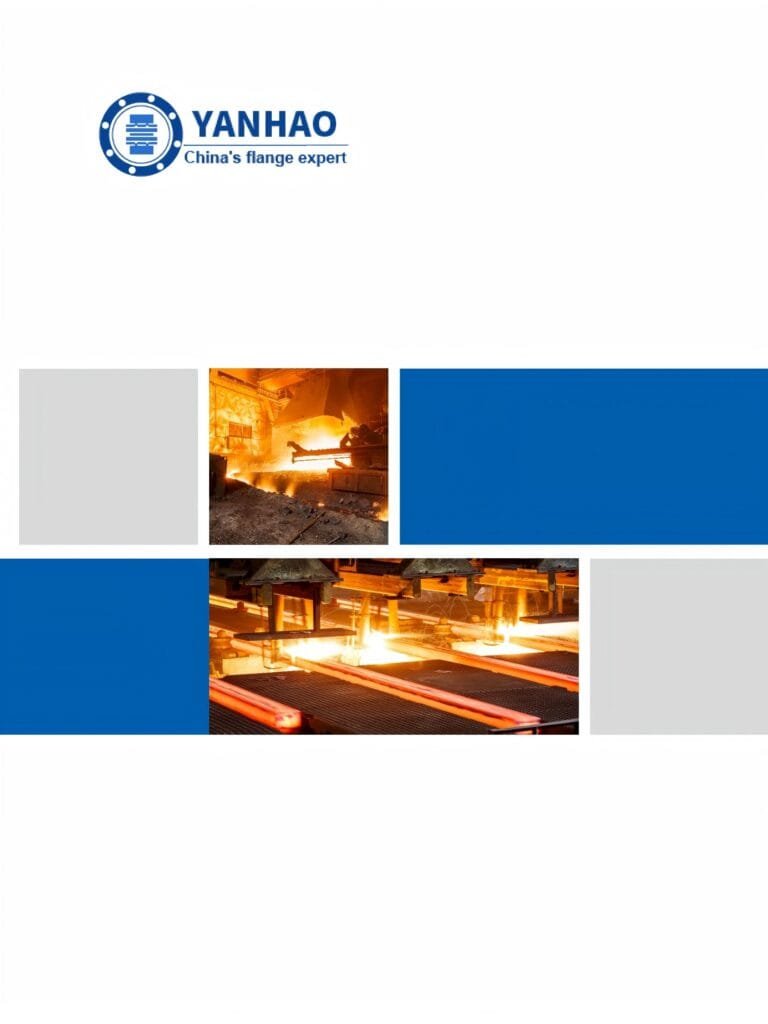With so many flange grades available, how do we select the right flange grade?
Choosing the right flange grade requires a comprehensive assessment of working pressure, temperature, fluid properties, and system requirements. Start by identifying the system’s working pressure range and select an appropriate flange grade within that range. In high-temperature and high-pressure environments, higher flange grades are typically preferred. Understanding the impact of working temperature and fluid properties on flanges is equally crucial. Lastly, ensure that the chosen flange grade complies with relevant regulations and standards to guarantee system safety and performance. For more specific guidance, it is advisable to consult with professional engineers or flange manufacturers.
Common flange grade classifications
The common flange grade classifications are typically based on the pressure rating of the flanges. These classifications help identify the flanges suitable for specific pressure and temperature requirements. Common flange grade classifications include 150 lb (150#), 300 lb (300#), 600 lb (600#), 900 lb (900#), 1500 lb (1500#), and 2500 lb (2500#). These numbers denote the working pressure the flanges can safely handle, with higher numbers indicating higher pressure ratings. Selecting the right flange grade is crucial to ensure the safety and performance of the system in various industrial applications.
Choosing the appropriate flange grade requires a comprehensive consideration of multiple factors, including working pressure, temperature, fluid properties, system requirements, and project budget. The following are detailed factors to consider:
Working Pressure:
Working pressure is the primary consideration when selecting the flange grade. The flange grade must be able to safely withstand the maximum working pressure of the system. When determining working pressure, the following factors need to be considered:
- The maximum working pressure of the system.
- Safety margins to prevent overloading of the flange.
- Periodic pressure fluctuations, if any. Choose the flange grade based on these factors, ensuring that its rated working pressure (typically expressed in “lb” or “psi”) is higher than the maximum working pressure of the system.
Operating Temperature:
The operating temperature range is crucial for the selection of flanges. Different materials and designs are suitable for different temperature ranges. When considering operating temperatures, the following should be taken into account:
- Determine the lowest and highest operating temperatures of the system.
- Consider the thermal expansion and thermal stress of materials, especially in high-temperature environments.
- In cases where the system operates at extreme temperatures, select special materials or coatings with high-temperature or low-temperature performance.
Fluid Properties:
The properties of the fluid have a significant impact on flange selection. When considering fluid properties, several aspects should be considered:
- The corrosiveness of the fluid, which guides the choice of corrosion-resistant materials.
- Fluid viscosity, which may require stronger flanges to withstand fluid adhesion.
- The presence of particulate matter, which may necessitate flange materials with high abrasion resistance.
- Flow velocity, where high flow velocities may lead to impact and erosion, necessitating the choice of flange grades suitable for high flow rates.
System Requirements:
Understanding the specific requirements of the system is critical for flange selection. Here are some of the requirements to consider:
- System type (pipes, containers, valves, etc.).
- Connection methods (welding, threading, gasketed flanges, etc.).
- System functionality and purpose.
- Pressure drops, particularly in long pipelines.
- Sealing performance, especially for highly corrosive or toxic fluids.
- Legal and industry standard requirements to ensure compliance.
Project Budget:
Consider the budget constraints of the project when selecting an economical flange grade. Different types of flanges and materials come with varying costs, so it’s essential to balance performance and cost. Large-scale projects may benefit from bulk purchasing discounts, reducing the cost of flanges.
Regulations and Standards:
Compliance with applicable regulations and industry standards is crucial to ensure the legality, performance, and safety of the flange. Different regions and industries may have varying regulations and standards that dictate flange performance and material requirements. Ensure that the selected flange grade complies with these regulations and standards to ensure its legality.
Professional Consultation:
For complex applications or situations with uncertainty, it is advisable to consult with professional engineers or flange manufacturers to receive expert advice. Professional consultation helps ensure that the selected flange grade is suitable for specific application conditions.
By considering these factors comprehensively, you can select the appropriate flange grade for a specific application to ensure performance, safety, and compliance. Each factor plays a crucial role in flange selection, so careful consideration is essential to make wise choices.
Example:
Consider a high-temperature, high-pressure reactor system in a chemical plant. The working pressure reaches 2000 psi, the operating temperature goes up to 600°C, and the fluid is highly corrosive. In such a scenario, the appropriate flange grade may be 1500 lb or 2500 lb, and materials like highly corrosion-resistant nickel alloys or titanium alloys could be chosen. This ensures that the flanges can withstand high-temperature, high-pressure conditions and resist corrosion.
On the other hand, a low-pressure water supply system might only require flanges with a 150 lb rating, and cost-effective stainless steel materials may suffice because the working conditions are relatively mild.
In any case, choosing the right flange grade requires a comprehensive consideration of working pressure, temperature, fluid properties, system requirements, and budget to ensure the system’s safety, performance, and cost-effectiveness.
Author: Lewis Liu
Hello, my name is Lewis Liu, and I’m a professional sales engineer with over a decade of expertise in the flange fittings sector.
I am quite informed about flange selection, installation, and maintenance. I am passionate about providing customers with the greatest solutions for keeping their pipeline systems running smoothly, safely, and dependably.
If you have any queries or concerns concerning flange fittings for your pipelines, whether they are about selection, material choice, specification requirements, or anything else, please contact me at any time. I am dedicated to providing expert advice and assistance to help you make educated decisions and reach your objectives.

